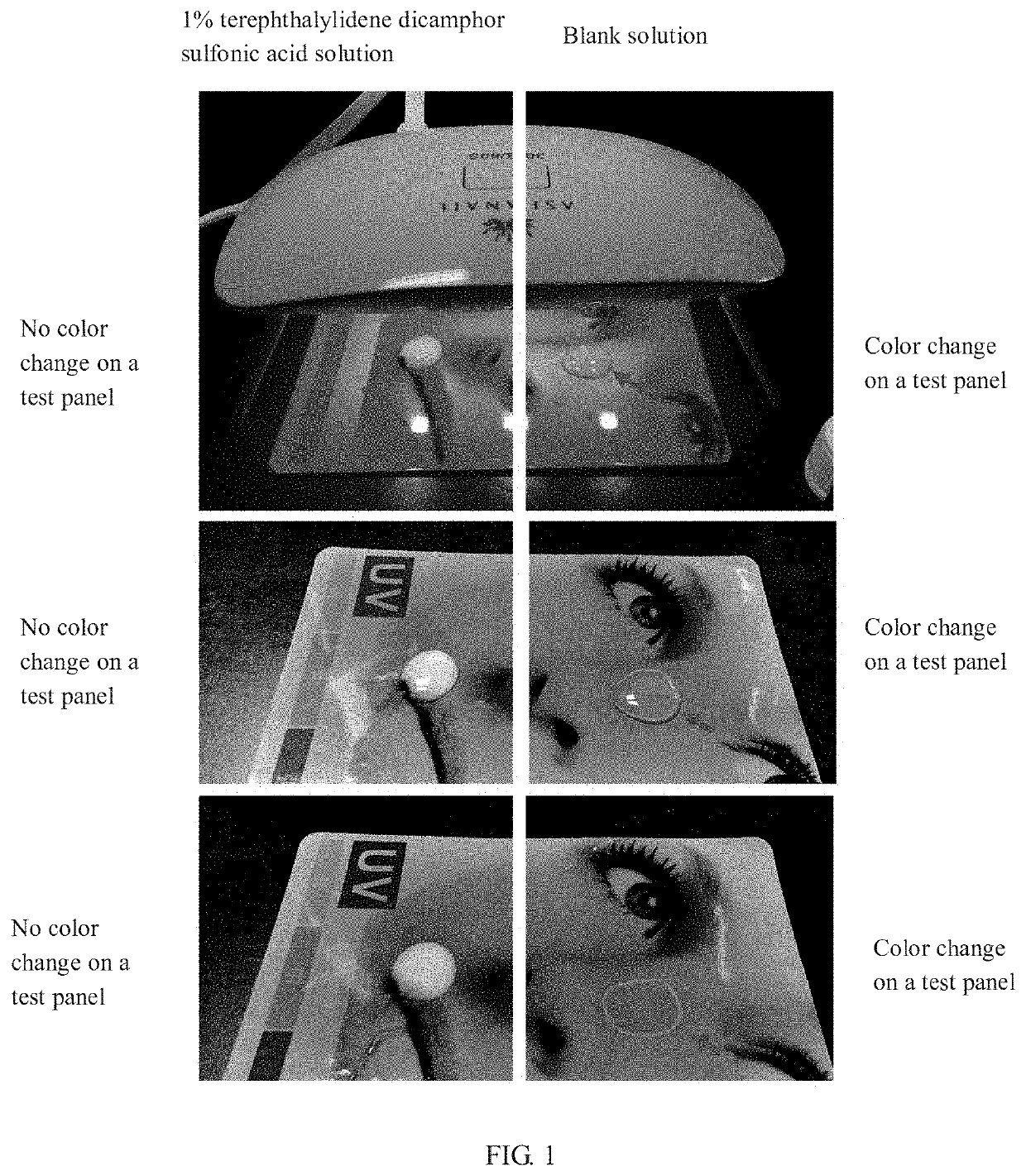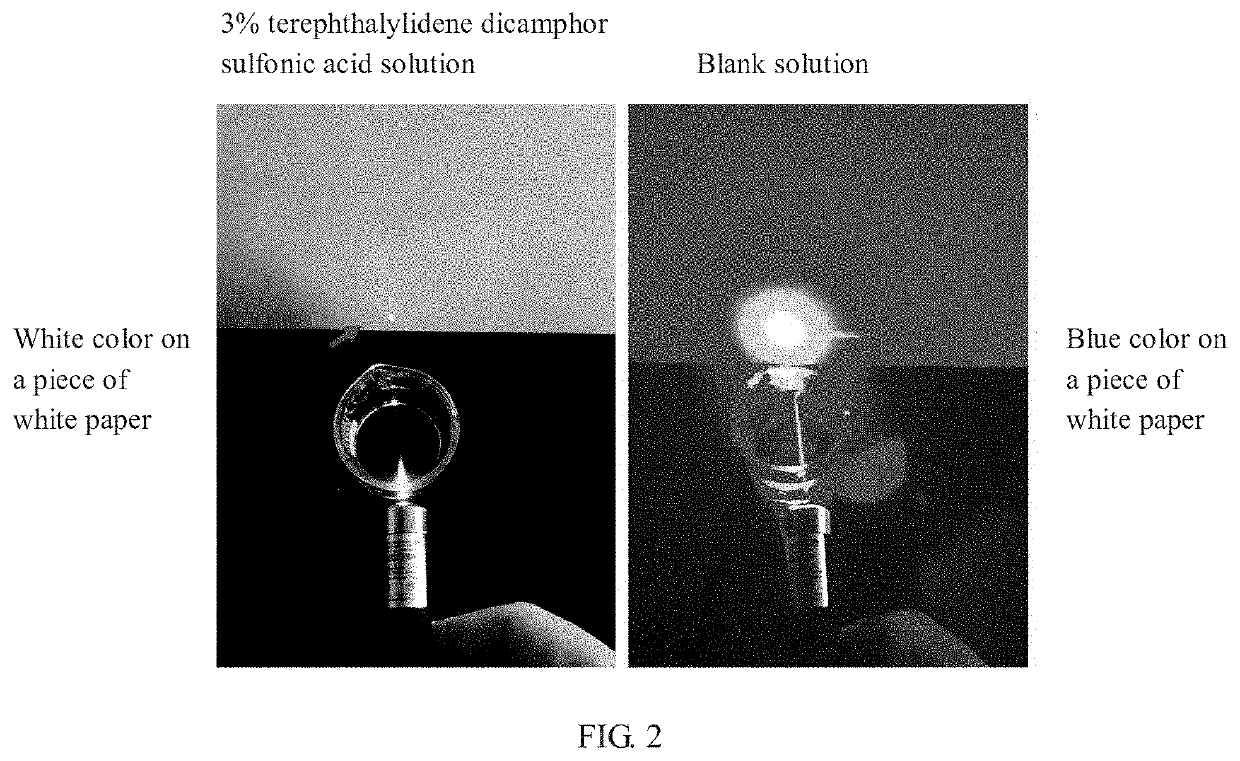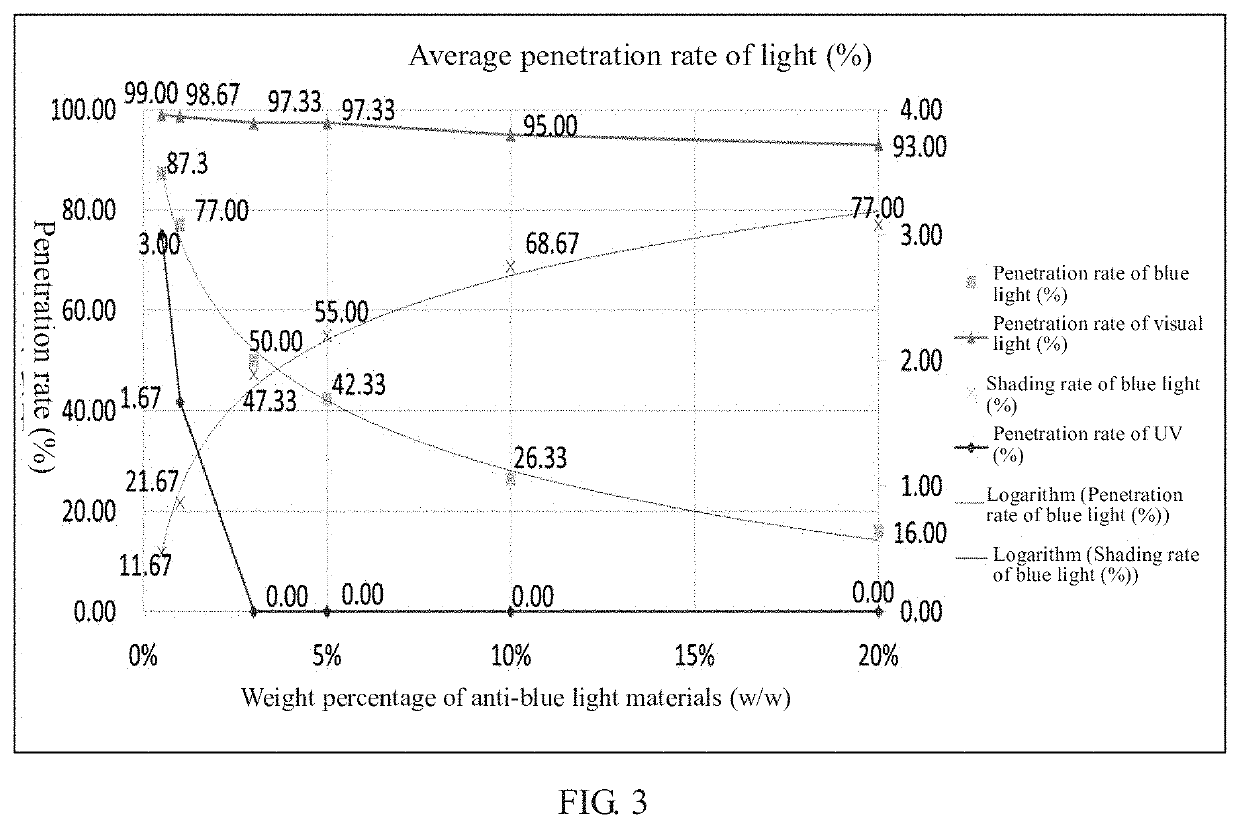Anti-Blue Light Dermal Topical Composition and Applications Thereof
a topical composition and skin technology, applied in the field of skin health care, can solve the problems of skin degradation, skin aging or melanin pigmentation,
- Summary
- Abstract
- Description
- Claims
- Application Information
AI Technical Summary
Benefits of technology
Problems solved by technology
Method used
Image
Examples
embodiment 1
, Test for the Anti-Blue Light Effect of Terephthalylidene Dicamphor Sulfonic Acid (1)
[0039]In this embodiment, the anti-blue light effect of terephthalylidene dicamphor sulfonic acid is tested in a nail dryer. Specifically, test panels on which the 1% terephthalylidene dicamphor sulfonic acid solution (experimental group) and the blank solution without terephthalylidene dicamphor sulfonic acid (control group) are instilled separately are irradiated in a nail dryer and checked for any color change after 20 seconds. The color on a test panel irradiated by a nail dryer from which UV light or blue light is launched may change to dark purple; the color on a test panel on which a solution with protective anti-UV or anti-blue light substances is covered will not change.
[0040]As shown in FIG. 1 and Table 1, the color on a test panel on which the 1% terephthalylidene dicamphor sulfonic acid solution is instilled locally does not change to dark purple during or after irradiation of a nail dr...
embodiment 2
, Test for the Anti-Blue Light Effect of Terephthalylidene Dicamphor Sulfonic Acid (2)
[0041]In this embodiment, the anti-blue light effect of terephthalylidene dicamphor sulfonic acid is tested with a 100 mW blue-light laser pointer. Specifically, transparent glass cups in which the 3% terephthalylidene dicamphor sulfonic acid solution (experimental group) and the blank solution without terephthalylidene dicamphor sulfonic acid (control group) are filled separately are irradiated with a 100 mW blue-light laser pointer. The status of a solution penetrated by blue light is checked with a piece of white paper on which any residual light is casted: a solution proves effective in blocking blue light if white light rather than blue light is casted on the piece of white paper.
[0042]As shown in FIG. 2 and Table 2, the blank solution rather than the 3% terephthalylidene dicamphor sulfonic acid solution is easily penetrated by blue light. Thus, the anti-blue light effect of terephthalylidene ...
embodiment 3
, Test for the Shading Rate of Blue Light by Terephthalylidene Dicamphor Sulfonic Acid Solutions with Different Concentrations
[0043]Solutions with different concentrations prepared by terephthalylidene dicamphor sulfonic acid are tested with a UV / blue-light detector (Actor-Mater Co., Ltd.) for penetration rates of ultraviolet (UV), blue light (BL) and visual light (VL). The shading rate of blue light is calculated by the formula as follows:
Shading rate of blue light (%)=penetration rate of visual light−penetration rate of blue light
where wavelength ranges of UV, blue light and visual light tested with a UV / blue-light detector (Actor-Mater Co., Ltd.) are 380-400 nm, 405-425 nm and 520-540 nm, respectively.
[0044]As shown in Table 3 and FIG. 3, low-concentration terephthalylidene dicamphor sulfonic acid proves effective in blocking blue light; the effect to block blue light is promoted with the concentration of a terephthalylidene dicamphor sulfonic acid solution increasing.
TABLE 3Conc...
PUM
| Property | Measurement | Unit |
|---|---|---|
| wavelengths | aaaaa | aaaaa |
| wavelengths | aaaaa | aaaaa |
| wavelengths | aaaaa | aaaaa |
Abstract
Description
Claims
Application Information
 Login to View More
Login to View More - R&D
- Intellectual Property
- Life Sciences
- Materials
- Tech Scout
- Unparalleled Data Quality
- Higher Quality Content
- 60% Fewer Hallucinations
Browse by: Latest US Patents, China's latest patents, Technical Efficacy Thesaurus, Application Domain, Technology Topic, Popular Technical Reports.
© 2025 PatSnap. All rights reserved.Legal|Privacy policy|Modern Slavery Act Transparency Statement|Sitemap|About US| Contact US: help@patsnap.com



